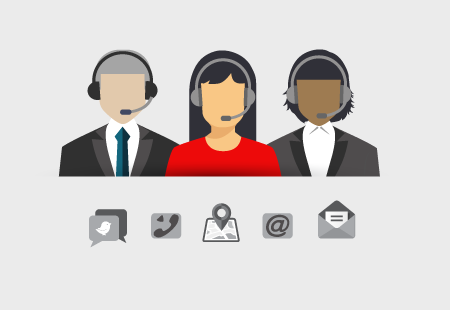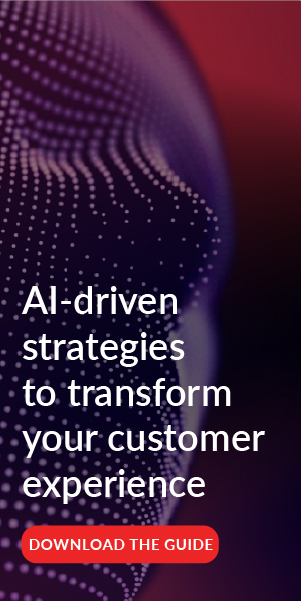Topics
5 Ways Technology Can Improve Call Center Efficiency

There’s a lot of buzz around personalization. The term sounds abstract and even ominous, depending on whom you ask. As a citizen, I’m weary of the government peering into my personal life. As someone who works in advertising, I consider data the science of persuasion. While perspectives differ, 80% of consumers have no trouble giving their favorite brands access to otherwise private information. Admittedly, as a customer, I do appreciate the brands that use personalization tactfully and efficiently.
Here are five ways personalization can improve how a business interacts with its customers:
1. Anticipating Customer Needs
Isn’t it great when someone—whether it’s a business, parent or friend—knows exactly what you want? This is a rarity in any instance, but I still appreciate my Netflix recommendations. And my favorite playlist; the one Spotify creates for me, based on my music taste.
Another example of a brand “nailing it” is KLM. The airline designed an app that behaves like a travel companion. Each time a user opens the app, it provides the most important information for that particular moment and recommends the next action to take, in the context of their travels. Over time, the app learns about a user based upon their habits. If a person always books a window seat, for example, the app will start automatically suggesting it.
2. Automated Savings
It’s a no-brainer that people love a good deal, but now retailers are making it easier than ever to access savings that lead to customer affinity. Take Amazon: their credit card has no annual fee, and allows Prime users to receive 5% back on all Amazon orders.
3. Showcasing Customer Data
While data can be daunting, customers appreciate it when businesses help them make sense of this information. Mint.com is a great example. I, for one, am usually terrified of my bank statement, but this site is a user-friendly alternative that helps you understand your current spending patterns, set financial goals and stay on budget. American Express has recently launched a similar (but much less robust) interface for their online users, illustrating the value of this information to consumers.
4. Better Targeting
We’ve all seen (and tried to avoid) banner ads while browsing the web. But what if these ads were based on your current needs, instead of what a company wants you to buy? A new patent filed by Apple could make it happen. The tech giant is creating an eCommerce system that could send advertisements to consumers based on how much they can afford. Users who opt-in and embrace the digital ad space—and let Apple view their banking statements—can enjoy truly tailored results.
5. Fielding Customer Complaints
Data leads to better costumer service. When it comes to the call center, it’s best to anticipate a customer’s needs so you don’t have to ask unnecessary questions that add to longer wait times. Southwest Airlines, for example, is using speech analytics to extract data-rich info from live-recorded interactions between customers and personnel to get a better understanding of their customers.
Additionally, social media managers with adequate social listening and moderating tools are now empowered to give immediate, effective and human responses to angry social media posts.
What does it all mean?
A brand should never act intrusive or “creepy” in asking for customer data and personal information—and it’s always the responsibility of the business to use this information ethically—but if your target demographic will offer data in return for tailored results, it can only lead to a better customer experience.

